
In 2007, two Spanish broadcasting groups decided to launch the project of a lifetime.
Videos by TravelAwaits
Piggybacking on the rollout of the New Seven Wonders of the World, which was a worldwide vote designed to replace the old, ancient, and largely disappeared original Wonders of the World, the goal was to declare Spain’s own unique treasures.
They would be known as the official Treasures of the Kingdom of Spain, which would be selected through a massive, nationwide poll. (Spain is technically still a monarchy, and its official name is the Kingdom of Spain or the Reino de España.)
Originally, the contest was supposed to finalize seven of the country’s greatest landmarks, both natural and manmade. But as the competition progressed and the list was whittled down to 20 finalists, the figure was expanded to include twelve treasures.
Think you can name them?
Even if you’re well-traveled around Spain and its far-off territories, you might be surprised by a few of the landmarks that made the list. (I’ve lived in Spain for six years, and some picks were new to me.)
The 12 treasures of Spain in order of votes
- Mosque-Cathedral of Cordoba, Cordoba
- Cave of Altamira, Santillana del Mar
- Seville Cathedral, Seville
- Alhambra, Granada
- Basilica of Our Lady of the Pillar, Zaragoza
- Teide National Park, Tenerife
- Roman Theatre of Merida, Merida
- Cathedral of Santiago de Compostela, Santiago de Compostela
- Ciudad de las Artes y las Ciencias (City of Arts and Sciences), Valencia
- Sagrada Familia, Barcelona
- Beach of La Concha, San Sebastian
- Guggenheim Museum Bilbao, Bilbao
The 12 treasures of Spain & how to visit them
Mosque-Cathedral of Cordoba, Cordoba
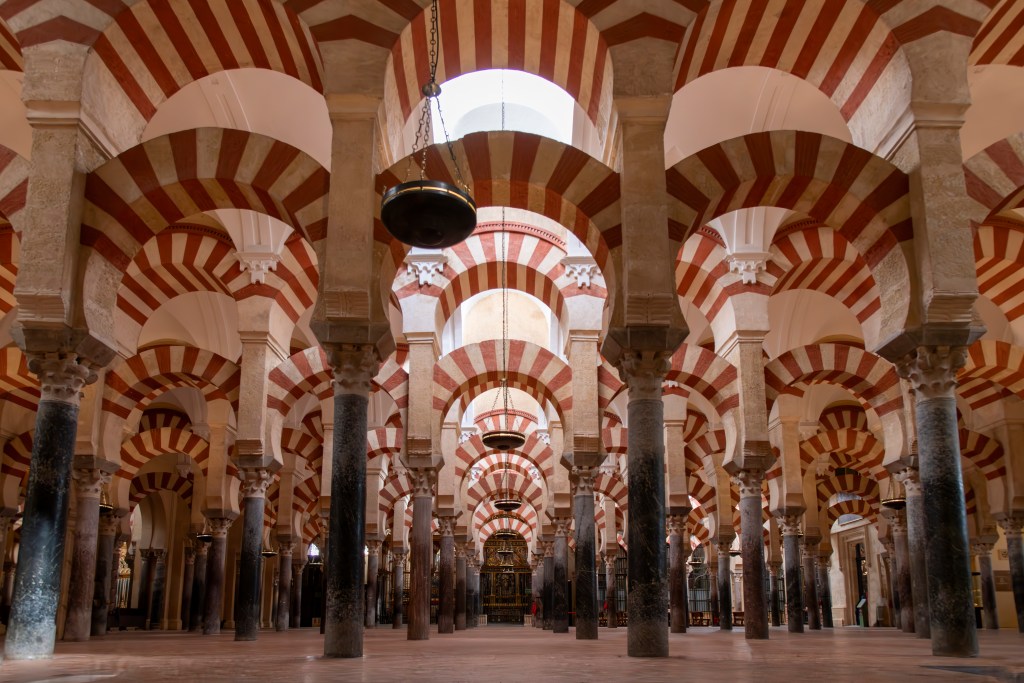
Originally constructed in 785 when Cordoba was the capital of the Emirate of Cordoba, this former mosque is a direct link to Spain’s Moorish history. Following the fall of the Emirate, the mosque was eventually transformed into a Catholic cathedral in the early 1200s. During the Renaissance and again in the 1900s, the cathedral was remodeled and improved.
Rather than diminish the Muslim architecture and features, they have instead been preserved as part of the ground’s history. You’ll see it called the Mezquita thanks to this, which is Spanish for mosque.
Today, the Cathedral of Cordoba runs as an active Catholic church and UNESCO World Heritage Site. You can attend Mass there every day.
How can you visit?
You can purchase a ticket to enter either online or in person. The cathedral is open every day except Sunday from 8 am to 8 pm. Entry is free between 8-9 am, but not for groups. Additionally, there’s a special one-hour night program that lets you explore the church after sunset, called The Soul of Cordoba.
Cave of Altamira, Santillana del Mar
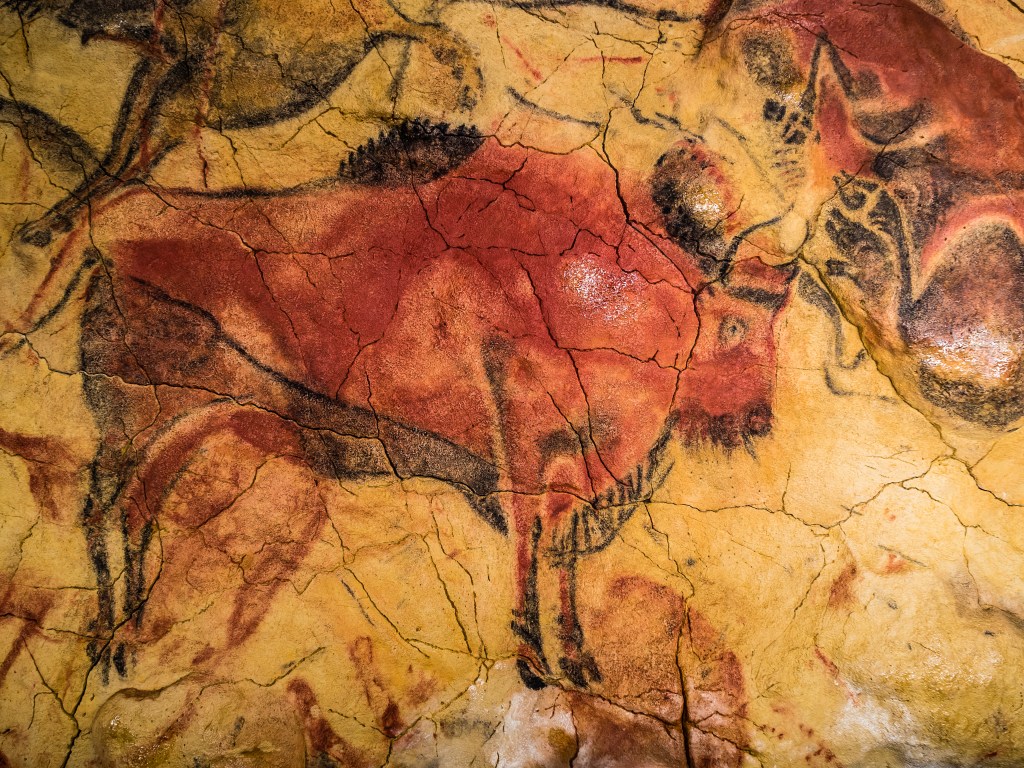
Like France, Spain is home to a smattering of centuries-old structures, including manmade caves the Dolmen of Menga that were built millennia ago. But it looks like the public prefers to the Cave of Altamira in Cantabria, which is home to prehistoric cave art made in charcoal. Altamira stands out because its drawings are well-preserved and are easy to identify, from bulls to bison to wild boars.
Care to guess when these fuzzy beasts were scribbled on the walls? According to researchers, the cave murals of Altamira were done around 36,000 years ago during the Upper Paleolithic era.
How can you visit?
Unfortunately, the Cave of Altamira isn’t open to the public in an effort to preserve the drawings. Only five visitors are allowed in per week with the help of an official guide—and these visitors were selected to be put on a waiting list back in 2002 before the Cave of Altamira even landed on the list of the 12 Treasures of Spain.
However, you can visit the Museum of Altamira, which contains a full-scale replica of the original cave.
Seville Cathedral, Seville
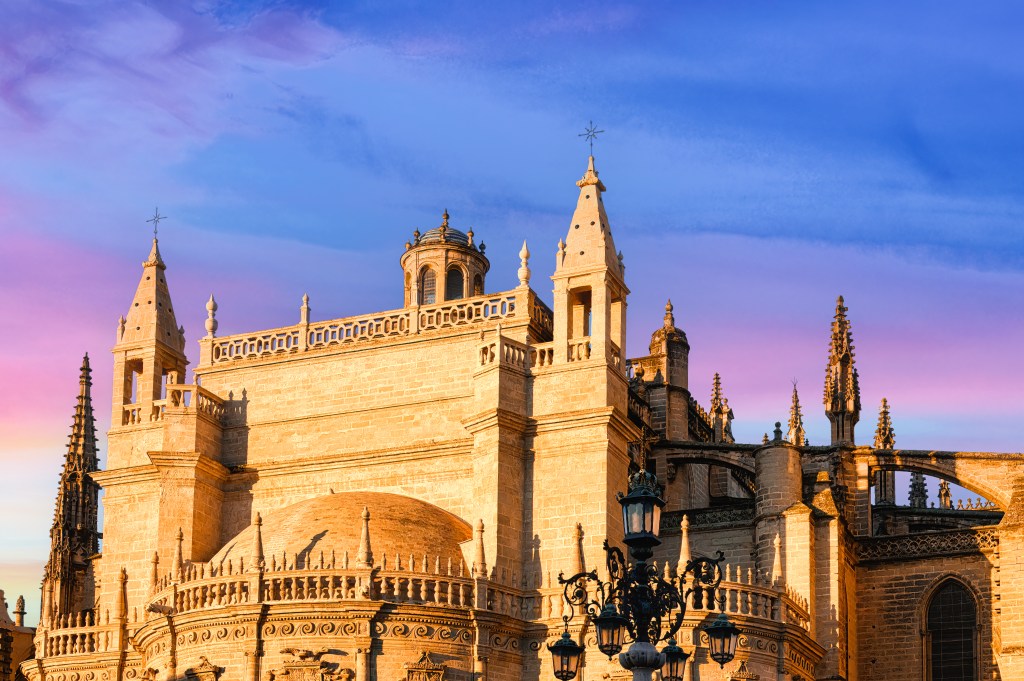
The largest Gothic cathedral in the world, and one of the largest churches in general, Seville Cathedral is both of a UNESCO World Heritage Site and the baptism site of Spanish royals. But, similar to the Cathedral of Cordoba, the grounds were first broke to construct a mosque in 1182, meaning you might spot a few Moorish callbacks when you visit.
How can you visit?
Visiting the Cathedral isn’t nearly as straightforward as you might hope. There are connecting complexes like the Giralda and Roofs, meaning you need to buy multiple tickets if you want to see it all. Explore your options here at the official website.
Alhambra, Granada
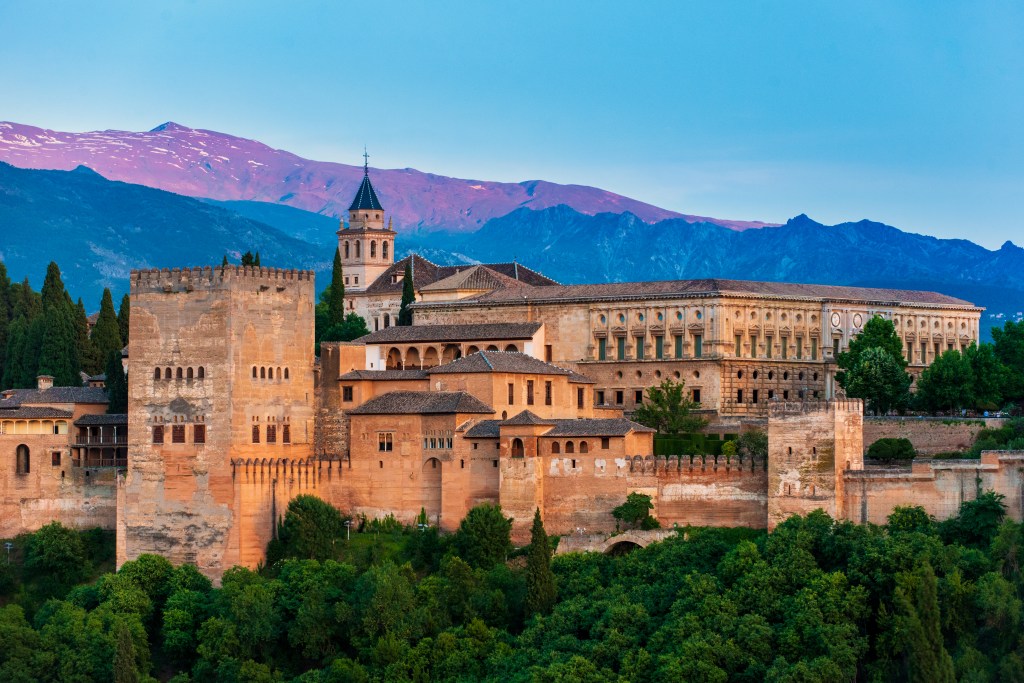
Once again, we have a grand monument that stretches back to Spain’s Moorish era. Alhambra is considered one of the world’s greatest fortress-complexes thanks to its Islamic and, later on, Spanish Renaissance architecture. Construction began in 1238 as part of the Emirate of Granada, the last stronghold of the Moors in Iberia.
Following the reclamation of the city by Spanish forces, Alhambra became an important site. For example, it’s the very place where the royal court gave their blessing to Christopher Columbus, who sailed across the Atlantic for the Spanish Crown.
How can you visit?
As one of Spain’s biggest tourist attractions, it’s easy to visit Alhambra in Granada. You can buy your tickets online, at which point you need to select a time slot for your visit. Make sure to consider the layout of the palace and the temperatures at the time of your visit—try to avoid going during peak heat hours.
Basilica of Our Lady of the Pillar, Zaragoza

This is the first site on this list that I hadn’t heard of before—and it’s easily one of the coolest. Forget going back to the era of the Moors. This church dates back to when Christianity first spread to Spain, as the basilica is on the site of two important apparitions that helped compel the spread of the religion. The first was of James the Apostle, the second of the Virgin Mary.
Despite its ancient history, the basilica was largely restyled and built between 1681 and 1872. It’s a stunning baroque structure that any fans of architecture will enjoy, regardless of whether Catholic sites pique your interest.
How can you visit?
Basilica of Our Lady of the Pillar is located in the heart of Zaragoza and open to the public during non-worship hours. If you want to learn more, you can also purchase tickets to gain access to a small museum on the grounds, along with the tower. The tower also offers great views of Zaragoza.
Teide National Park, Tenerife

Located off the coast of West Africa, the Canary Islands offer a unique vacation thanks to its volcanic landscapes and stunning beaches. The island of Tenerife is home to Mount Teide, an active volcano that’s the third-largest in the world.
If you’re an outdoorsy person who loves raw, rugged landscapes, it’s a stirring sight to behold as you explore Teide National Park. In fact, of the 12 Treasures of Spain, this is the only natural landmark to make the list.
How can you visit?
Teide National Park is easily accessible if you have a car rental or, if not, if you join a tour. If you plan on actually summiting to the peak (Pico del Teide), then you need a permit. You can obtain a permit from the National Park website. You can also book guided tours there.
Roman Theatre of Merida, Merida
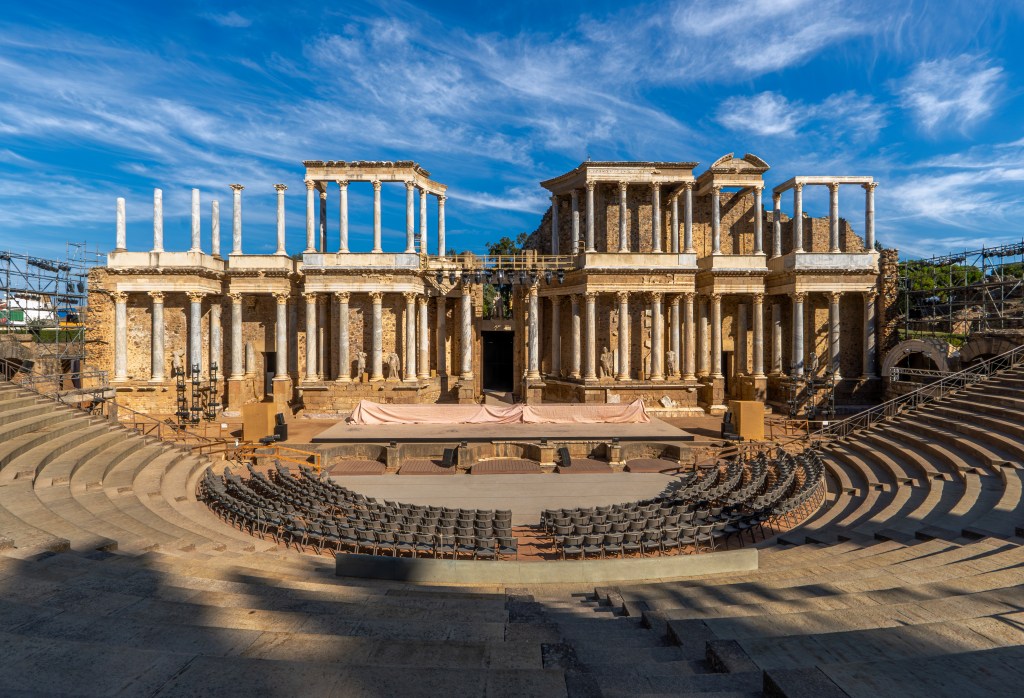
I’ve said it once and I’ll say it again: the most intact Romain ruins aren’t in Italy or Greece. Some of the grandest sites are located in North Africa, but Spain’s Roman Theatre in Merida isn’t too shabby, either. This massive amphitheater is located in Merida, which was the former capital of the Roman colony of Lusitania.
Uniquely, the theatre was lost to time, slowly being covered by sediment throughout the Late Antiquity period. Until the grounds were excavated in the late 1800s, all that locals could see of the ancient theatre were the crests of its bleacher-style seats.
How can you visit?
Head to the visitor’s center to purchase tickets, which includes access to multiple sites around the entire amphitheater complex. You can reach the visitor’s center by following the red signs that dot Merida.
Cathedral of Santiago de Compostela, Santiago de Compostela
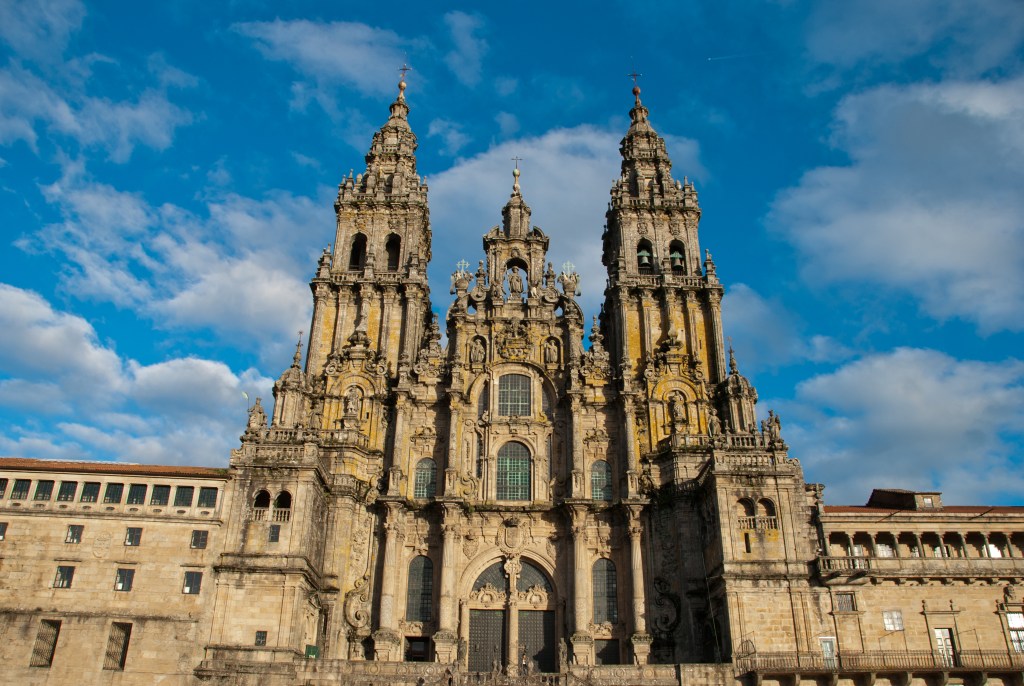
The Cathedral of Santiago de Compostela is the final location of the renowned Camino de Santiago, a religious trail for Catholics. The shortest version of the pilgrimage cuts through northern Spain to the Atlantic coast, where the cathedral sits.
Allegedly, the church is also the burial place of Saint James the Great, an actual apostle of Jesus Christ. (He’s also the Saint who inspired the construction of the Basilica of Our Lady of the Pillar, one of the 12 Treasures of Spain mentioned above.)
Ground was first broken back in the mid-9th century CE, as rumors had spread that the Apostle’s remains were buried underground. In a surprise twist, the early church in Santiago de Compostela was burned to the ground, and a few remnants like the bells were whisked off the build the then-mosque, the Mosque-Cathedral of Cordoba, which was the first site on this list.
How can you visit?
You can’t miss this cathedral, which dominates the town center. You can enter for free (like other churches on this list, this is an active site of worship). However, if you want to learn more about the church’s history and ongoing religious impact, I’d highly suggest booking an official tour.
Ciudad de las Artes y las Ciencias (City of Arts and Sciences), Valencia
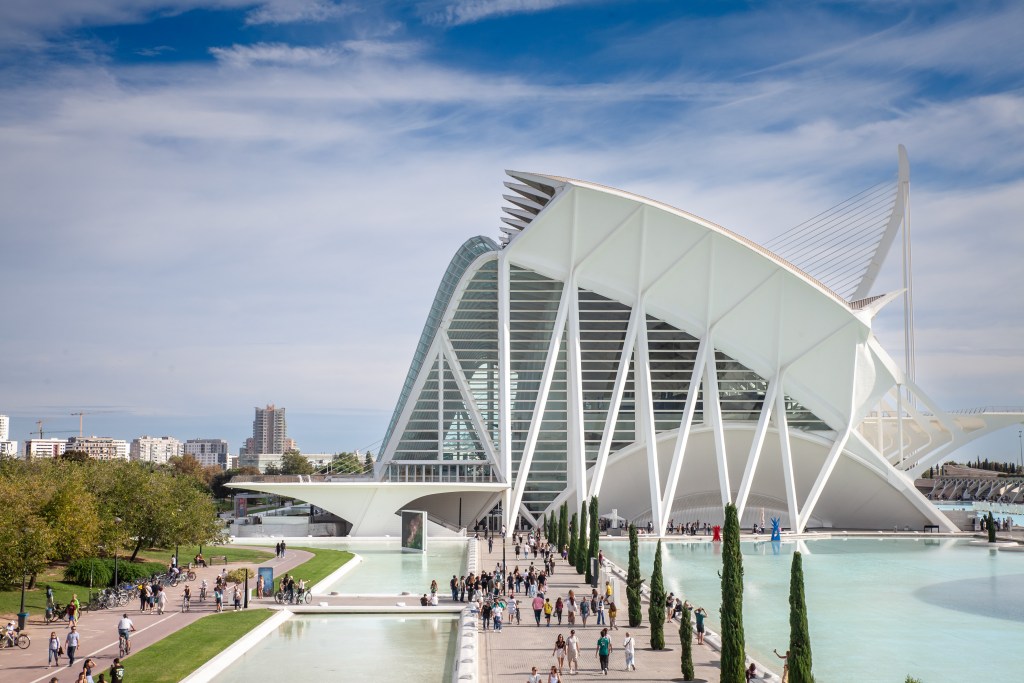
Meet Spain’s most modern marvel, the City of Arts and Sciences in Valencia. This massive complex includes eight different buildings that showcase unique museums that celebrate both natural and scientific knowledge. Off the record, it looks like the set of a Sci-Fi movie mixed with multiple James Bond-caliber villain lairs—and I mean that in the best way possible.
How can you visit?
The grounds are deceptively large, meaning you might not fully enjoy your trip if you just show up and wing it. I highly suggest studying up on the different museums and exhibits so that your visit has some structure. Most buildings require different tickets, too, so you’ll save a bit if you make a game plan before showing up.
Sagrada Familia, Barcelona
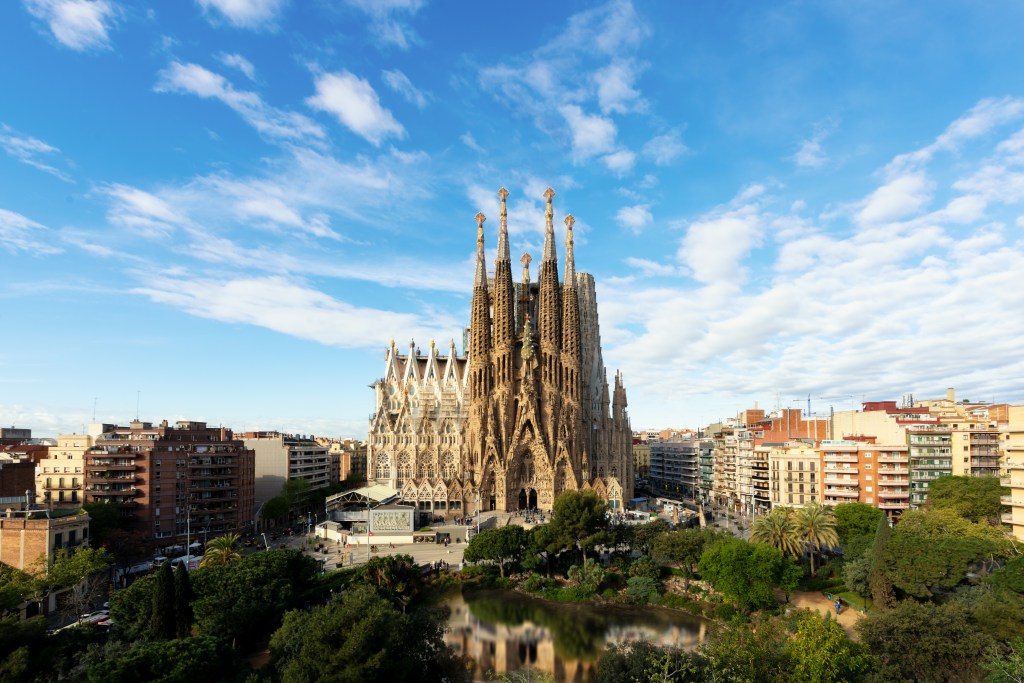
As one of Barcelona’s crown jewels, La Sagrada Familia needs no introduction. It’s easily the most famous of the 12 Treasures of Spain, especially for fans of Art Nouveau and Modernist architecture. This grand project from Antoni Gaudí is still under construction, while also functioning as an active church. In fact, it was blessed by the Pope back in 2010, which makes it a minor basilica.
How can you visit?
You can purchase tickets to visit La Sagrada Familia online. They give you a certain time slot to experience the main church, along with an optional tower add-on. I highly recommend visiting at sundown, as the stained glass windows fill with light, creating a jaw-dropping display.
Beach of La Concha, San Sebastian

Shaped like a shell, this long stretch of coast in Basque Country (near San Sebastian) is renowned for its elegance, opulent resorts, and natural beauty. This is the second site on this list that I hadn’t heard of before—even though it’s considered one of Europe’s best beaches, especially considering its urban setting.
How can you visit?
Head to San Sebastian and follow the sound of the ocean—you’ll find La Concha Beach in no time. The best way to get there is by walking from the city’s historic center. As a public beach, it’s always free and always open to use. During summer, local authorities put out diving and swimming decks just off the shore, making it an ideal watering hole during the warmer months.
Guggenheim Museum Bilbao, Bilbao

Considered one of the best Guggenheim Museums in the world, this Basque structure is a modern marvel. Unlike the majority of the 12 Treasures of Spain, it’s a modern marvel.
It was completed in the late 1990s (around the same time Valencia’s Arts and Sciences complexes were being built). It’s often regarded as a near-perfect contemporary work, which drew praise from the public and critics alike.
How can you visit?
The Guggenheim is open from Tuesday to Sunday from 10 am -7 pm. You can purchase tickets at the entry to explore the general museum, along with any exhibits they have going at the time. During summer, the museum is sometimes open until 8 pm.
